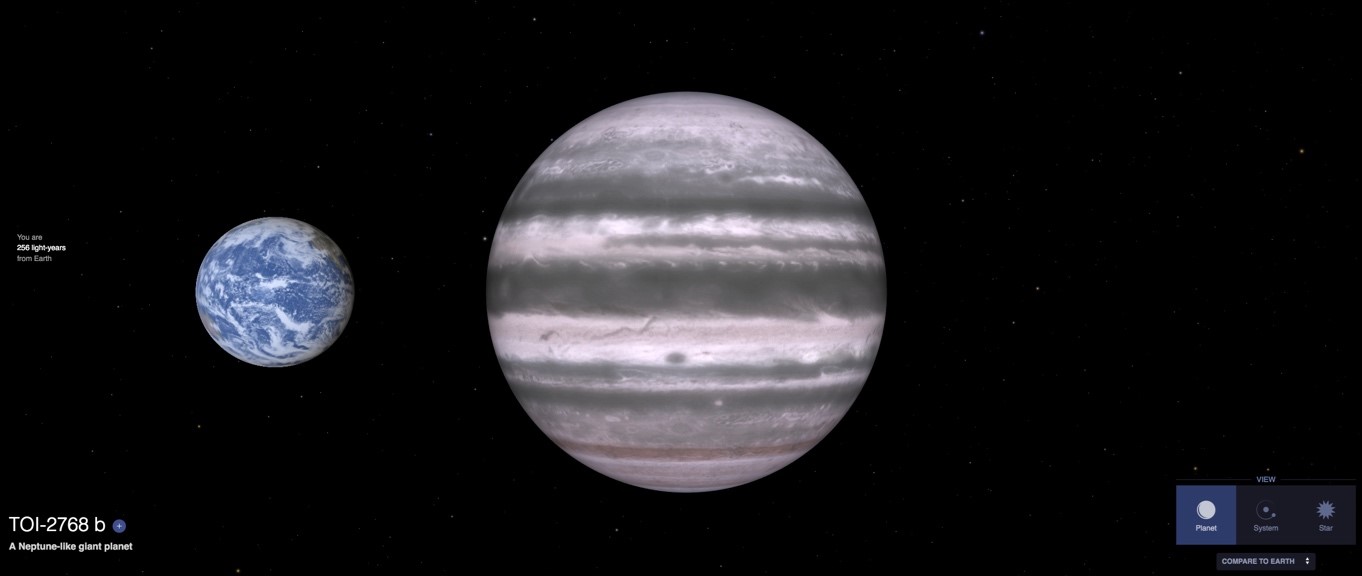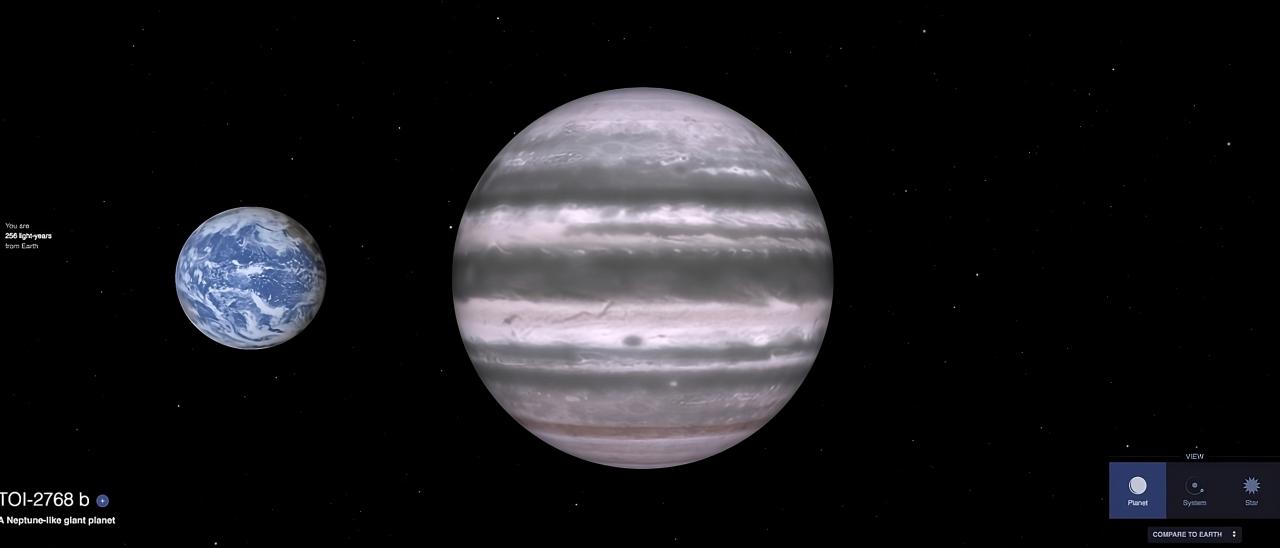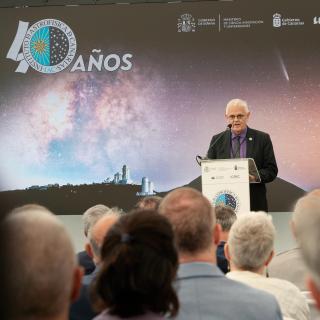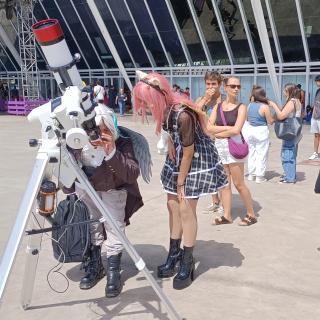The distribution of planets in the over five thousand distant solar systems discovered to date forms a complex puzzle. There is a region in the planetary orbit graph, known as the "Neptunian desert", where very few Neptune-like planets with orbits of between two and four days period around their star have been recorded to date. Now, a scientific team led by the Instituto de Astrofísica de Canarias (IAC) and the Instituto de Astrofísica de Andalucía-Consejo Superior de Investigaciones Científicas (IAA-CSIC), using a novel technique, new planets around red dwarf stars located precisely in this desert. The finding is published in the journal Astronomy & Astrophysics.
This work is the result of the Master's thesis of Alberto Peláez Torres (IAC-IAA-CSIC), directed by Emma Esparza Borges and Enric Pallé Bagó, carried out in the Exoplanets group of the IAC. During the development of the project, we have worked mainly with data obtained from the ground using the MuSCAT2 instrument (Multicolour Simultaneous Camera for Studying Atmospheres of Transiting Exoplanets 2), installed at the Carlos Sánchez Telescope (TCS) of the Teide Observatory (OT) in Tenerife, as well as with data from the TESS satellite (Transiting Exoplanet Survey Satellite), with the aim of increasing the probabilities of validating the largest possible number of exoplanet candidates.
The research aimed to clarify the planetary nature of thirteen TESS Objects of Interest (TOIs), detected by NASA’s exoplanet search mission. “These objects could be either planets or other bodies that photometrically resemble them, such as brown dwarfs – considered the link between low-mass stars and large gas giants – or binary star systems,” explains Alberto Peláez Torres, a researcher at the and the Instituto de Astrofísica de Canarias (IAC) and the Instituto de Astrofísica de Andalucía (IAA-CSIC), who leads the study.
An innovative methodology
When selecting the most suitable method to identify the nature of these unclassified planetary objects, the host star –around which they orbit– plays a key role. In some cases, there are planets orbiting stars whose faintness precludes studies with more traditional techniques. This is precisely the case with red dwarfs, the host stars at the focus of this research.
“M-type stars are ideal for discovering potential small planets orbiting them, due to their low temperature and small size, which reduces the contrast between the radii of the star and the planet,” explains Alberto Peláez.

IAC researcher Emma Esparza says that “this work contributes to consolidate multicolour transit photometry as a valid and efficient technique in the field of exoplanets to confirm or rule out the planetary nature of the candidates proposed by the TESS misión”.
Thus, the research team opted for an innovative methodology based on multicolour transit photometry, which involves observing a star’s brightness through various colour filters. They used ground-based instruments such as MuSCAT2, MuSCAT3, and LCO-SINISTRO, alongside high spatial resolution observations and TESS light curves. As a result, they validated five of the TESS exoplanet candidates: TOI-1883b, TOI-2274b, TOI-2768b, TOI-4438b, and TOI-5319b.
This discovery holds additional significance, as several of the five validated planets, particularly TOI-2768b, are located directly within the Neptunian desert. This region is marked by a scarcity of Neptune-sized planets – four times the Earth’s radius – making the discovery especially unusual. Various studies suggest that physical phenomena in this area “drain” planets of these characteristics, such as atmospheric mass loss due to high-energy irradiation from their star, a process known as photoevaporation.
“The discovery of planets in the Neptunian desert is crucial for advancing exoplanet studies, as investigating their atmospheres could shed light on the phenomena affecting these planets and explain their scarcity in this region,” says Alberto Peláez.
New empirical definition of its boundaries
Over the years, planetary discoveries have shown that the Neptune desert, a concept proposed in 2016 that included planets with orbital periods between one and four days and radii between two and six times that of Earth, does not match the current distribution of exoplanets.
With this premise, the newly published study proposes a revised definition of the Neptune desert, including only planets between two and ten times the size of Earth, which must also orbit very close to their star: if they are at the smaller end of this range, they complete an orbit in one day; if larger, it takes around three days.
This study lacks a representative enough sample of validated planets –near or within the Neptunian desert– to provide conclusive statistical data. “Even so, the discovered planets open the door to future studies on their mass, density, and atmospheric characteristics, which could provide key information for understanding the physical nature of this region of space,” concludes Alberto Peláez.





